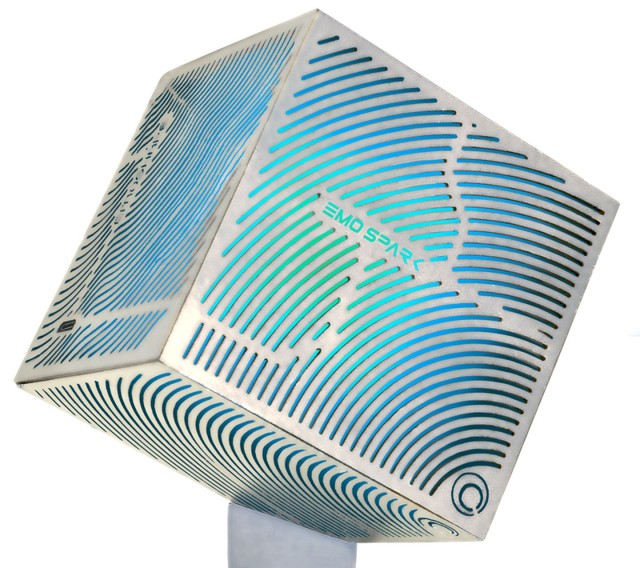Android Is Busting Out
This is the year that Android busts out — out of phones and tablets and into all kinds of devices.
Android is coming this year to your home, car, desktop, wrist, face, camera and other locations near you.
Of course, Android has been used by a huge number of non-phone, non-tablet devices. But these have almost always been niche products that didn’t go anywhere.
What’s likely to happen this year is a kind of “mainstreaming” of Android as the OS that powers random devices that you normally wouldn’t think of as mobile computers.
Remember when Google briefly talked about home automation? Google made a big deal about its Android@Home home automation initiative at Google I/O in 2011, but then backed off on Android@Home chatter in the two most recent conferences.
When Google released the 4.2.2 update to Android in February, the code contained a reference to mesh networking in the context of home automation. Around that time Android@Home references popped up in Google Now, as well as a hint about a “Card” for turning lights on and off.
This adds up to evidence that Google is working on it. Google itself may not be ready to make a big, public push for Android@Home this week at CES, but we’ll be looking for it at this year’s Google I/O.
CES is likely to introduce us to some third-party home-automation products using Android, so keep an eye out for that.
Also remember that the rising home automation revolution is tightly associated with the growing “Internet of things” movement. “Internet-of-things” simply means everything capable of getting on the Internet — being controlled from, sending notifications through or receiving sensor input via the Internet. Home Automation is shaping up to be the “Internet of things” for consumers, but the phenomenon is quickly spreading to business, retail stores, governments, cars and elsewhere.
Google is, on the other hand, planning to start hyping at CES Android in the Car. And it’s a great show for it, too. I’m hearing from my media friends that CES is feeling almost like a car show, as the consumer electronics industry and the auto industry start to converge.
Google is reportedly set to announce an industry consortium to support Android in the Car, as well as at least one splashy announcement with Audi.
We also heard from Tesla chief Elon Musk that his company plans to replace the system that powers Tesla’s 17-inch dashboard screens with Android.
We’ve seen a few laptop and desktop Android devices before, but CES will usher in some newer and better options.
Intel, for example, may be planning to show at CES a Windows laptop that also runs Android (using virtualization) — no reboot required, according to a report in The Verge. Interestingly, according to the report, neither Microsoft nor Google want anything to do with the project.
Acer has already announced, and will show at CES, the Acer TA272 HUL, a new iMac-size all-in-one PC that runs Android. (Acer will also show a smaller version, called the Acer DA223 HQL.)
It’s a safe bet that we’ll see other Android laptop and desktop products unveiled at the show and throughout the year.
The splashiest and, let’s face it, goofiest new products at CES this year will be wearable computing devices like smart watches, smart bracelets, smart glasses, smart goggles and other smart items that used to be dumb fashion accessories.
Most of these wearable products will support Android control and feedback via Bluetooth. But some of them actually run Android.
Rumors suggest that Sony will unveil the third generation of its Sony SmartWatch product, which runs a fork of Android. The Omate, I’m Watch, Goophone, and, of course Androidly watches all run Android, as do others.
Some of the more powerful smart glasses are running Android, too, including the Vuzix product, and, of course, Google Glass.
Samsung is already hyping in Vegas its Samsung Galaxy Camera 2, which runs Android 4.3.
One of the most unexpected Android devices to have emerged recently is the EmoSpark, and Android-based artificial intelligence assistant that lives in a metal cube.
According to the EmoSpark’s creators, who are trying to raise money to build and sell the $224 (early bird special price) gadget on Indegogo, the device can read emotions on your face and respond accordingly, as well as use other cues to figure out how you’re feeling. You interact with EmoSpark from any phone, tablet or computer, and helps you throughout the day in ways to be determined by app developers.
That last point about EmoSpark IS the point of Android in arbitrary devices: apps and developers, who can help Google and the device makers realize the full potential of all these new gadget categories.
The year 2014 looks to me like the year that Android busts out of phones and tablets in a massive way. As the EmoSpark can probably tell, I’m feeling pretty good about that.
So watch for Android everywhere starting this week at CES!



